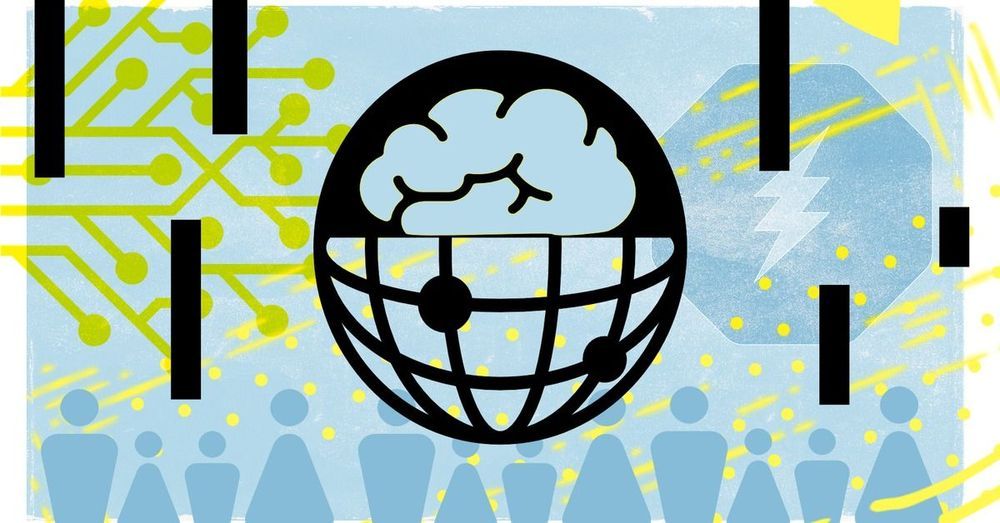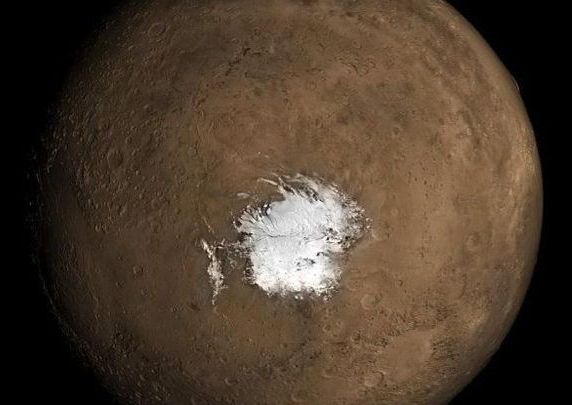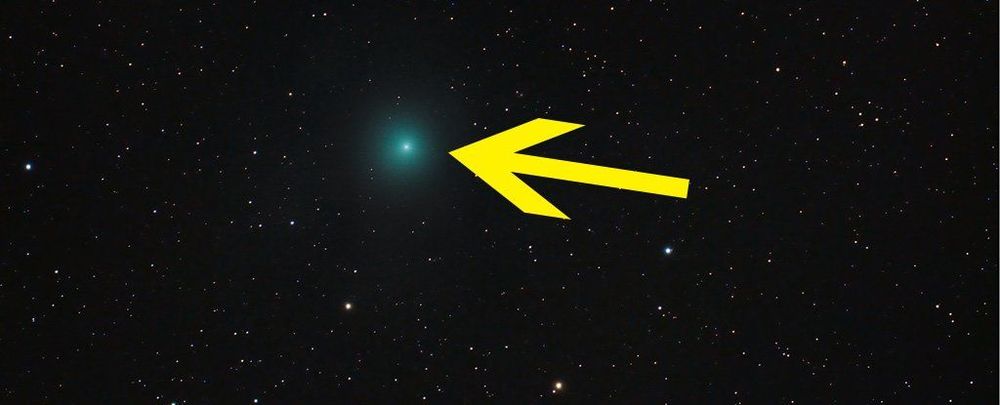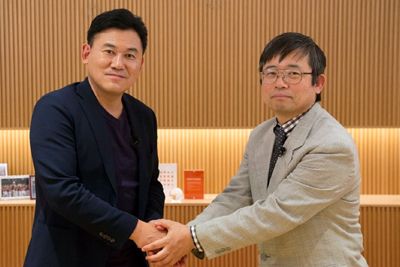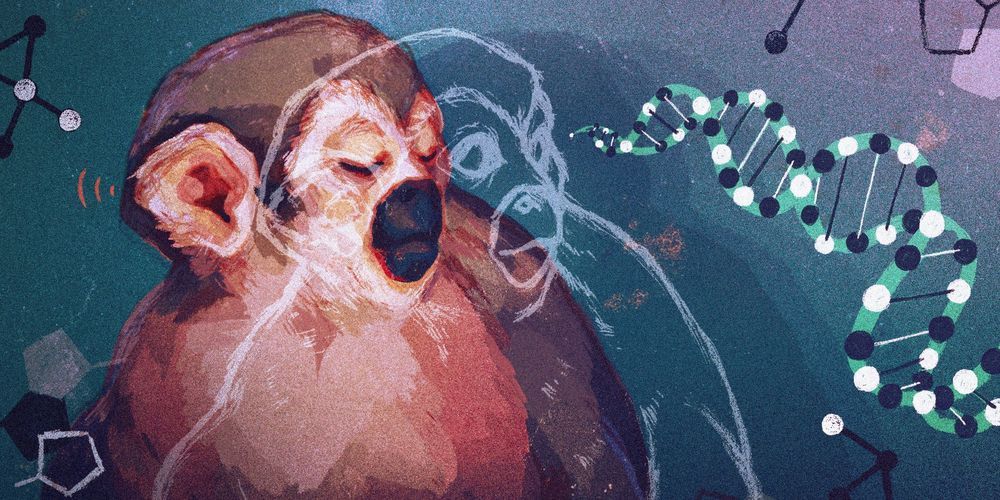Page 8149
Feb 14, 2019
We Just Got Evidence That Mars Could Have Volcanic Activity
Posted by Quinn Sena in category: space
A new study shows that Mars may very well be volcanically active. Nobody’s seen direct evidence of volcanism; no eruptions or magma or anything like that. Rather, the proof is in the water.
In the past, Mars was a much warmer and wetter place. Now, Mars is still home to lots of water, mostly as vapor and ice. But in August 2018, a study published in Science showed a 20-km-wide (12-mile-wide) lake of liquid water underneath solid ice at the Martian South Pole.
The authors of that study suggested that the water was probably kept in liquid state by the pressure from above, and by dissolved salt content.
Continue reading “We Just Got Evidence That Mars Could Have Volcanic Activity” »
Feb 14, 2019
Don’t Miss This Newly Discovered, Bright Green Comet Streaking Past Earth This Week
Posted by Quinn Sena in category: space
Earth is getting a special celestial visitor this week in the shape of comet C/2018 Y1 Iwamoto — this sparkling, green-hued hunk of ice and minerals is already visible in the night sky through telescopes and even binoculars.
It’s the first binocular comet of 2019 – which means a comet that’s visible from Earth through binoculars, as you might have guessed from the name; we only get a few of them each year.
This particular comet was only discovered a couple of months ago – credit due to amateur astronomer Masayuki Iwamoto – and the icy rock is calculated to take 1,371 years to orbit the Sun on a stretched out, elliptical path.
Feb 14, 2019
3D Printed Dress from Iris van Herpen Pushes Boundaries of Fashion
Posted by Quinn Sena in categories: 3D printing, education

Too many people believe that art and science exist as polar opposites and have delineated the disciplines as existing in an irreconcilable dichotomy that acts to drive the two types of knowledge apart. This conceptualization of the knowledge cultures is akin to placing two magnets next to each other such that their same poles when aligned repel each other: it foolishly denies the absolute attraction that exists when you simply flip one magnet the other way. Centuries ago, this attraction between art and science was understood as a given. The most easily identifiable product of this was a person such as Leonard da Vinci, whose work didn’t move back and forth between science and art, but rather understood the two as inextricably interwoven.
In the world of 3D printing, there appears to be developing an understanding that the bubbles of art and science are actually simply contorted ways of viewing a larger field of human knowledge. Dutch designer Iris van Herpen likes to play in the field and apply her understanding to the creation of fashion collections. Her pieces are explorations that encourage collaborative efforts because of the breadth of expertise in a wide variety of fields needed to create the pieces she has in mind. For a 2013 collection, she worked with photographer Nick Knight, who had captured images of the way water moved when splashed upon the nude body, in order to turn those images into garments. It became clear to Knight that van Herpen understood the inseparable nature of art and science, as he explained in an interview with the New York Times:
Continue reading “3D Printed Dress from Iris van Herpen Pushes Boundaries of Fashion” »
Feb 14, 2019
Hong Kong Has a Plan to Make All of Its Prisons “Smart”
Posted by Quinn Sena in category: law enforcement
Feb 14, 2019
Near-infrared light kills cancer, builds immune response
Posted by Quinn Sena in category: biotech/medical
This NIR photo immune therapy is to be licensed to Rakuten Aspyrian Therapeutics, in San Mateo, California.
by Ford Burkhart in San Francisco
Feb 14, 2019
New molecules reverse memory loss linked to depression, aging
Posted by Quinn Sena in categories: biotech/medical, life extension, neuroscience
These molecules not only rapidly improve symptoms, but remarkably, also appear to renew the underlying brain impairments causing memory loss in preclinical models.
“Currently there are no medications to treat cognitive symptoms such as memory loss that occur in depression, other mental illnesses and aging,” says Dr. Etienne Sibille, Deputy Director of the Campbell Family Mental Health Research Institute at CAMH and lead scientist on the study.
What’s unique and promising about these findings, in the face of many failures in drug development for mental illness, is that the compounds are highly targeted to activate the impaired brain receptors that are causing memory loss, he says.
Feb 14, 2019
The Green New Deal could help farmers help the planet
Posted by Quinn Sena in category: climatology
This month, a group of Democratic lawmakers called for an ambitious plan for the United States to reach net-zero carbon pollution in 10 years. While experts debate whether the proposal is technologically or politically feasible, the so-called Green New Deal is about more than shifting to cleaner, more advanced forms of energy sources. It’s also about shifting to more traditional forms of agriculture.
While farming generally takes a back seat to energy in discussions of climate, it accounts for up to a third of carbon pollution, by one account. Tractors and trucks that harvest and transport our food burn gasoline and diesel, generating pollution. Synthetic fertilizers derived from fossil fuels spur the release of heat-trapping gas from the soil, and cows and sheep emit large volumes of planet-warming pollution. Then there is the matter of agricultural giants burning forests to clear land for farming and grazing, thereby releasing carbon stored in trees into the atmosphere and reducing the capacity of the land to store CO2.
And yet, while agriculture is a big part of the problem, it can also be part of the solution. Smart growing practices can help soak up pollution and store it in the ground — what’s known as carbon farming.
Feb 14, 2019
Monkeys With Superpower Eyes Could Help Cure Color Blindness
Posted by Quinn Sena in categories: biotech/medical, genetics
Squirrel monkeys don’t see color like people. But inject their eyeballs with a genetically engineered virus and they suddenly can perceive a new rainbow. The same trick could someday be used on color-blind people.
